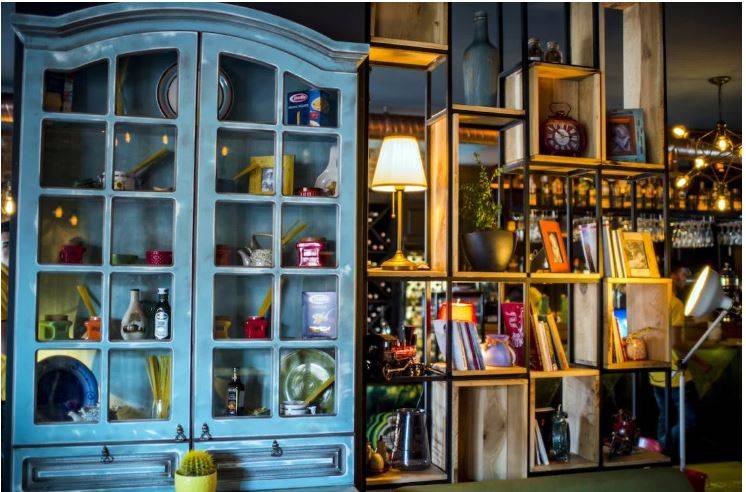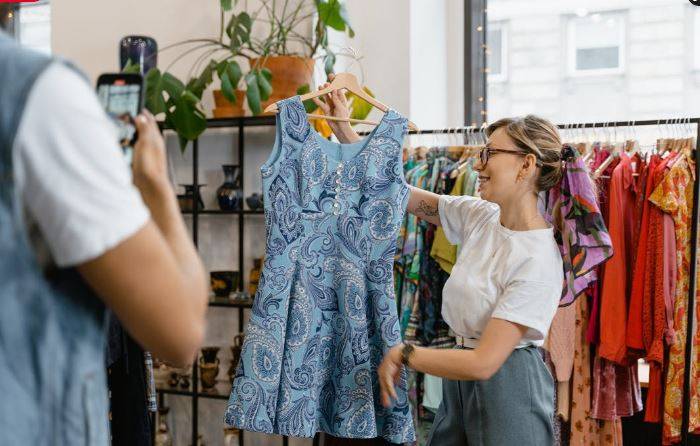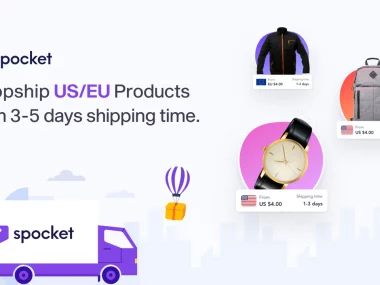Live shopping combines information with entertainment and is intended to create a new dimension of the shopping experience.
Why do we love online shopping?
The sheer endless choice, the speed with which we can select, order and have products delivered, and of course, the convenience of buying a new pair of shoes or the latest tech gadget without having to leave the house: all of these are good reasons for buying online. However, they only focus on our functional needs. Online shopping should save time, and be convenient and efficient.
It can also be interactive and fun. Live shopping combines information with entertainment and is intended to create a new dimension of the shopping experience that offers online shoppers convenience, efficiency, and gamification.
How live shopping began
Live shopping, live commerce, live stream shopping, or social shopping:
There are many terms that all mean the same thing. A presenter presents products via live video, i.e. in real-time, to an audience of online shoppers, which they can buy immediately on the platform on which the so-called live streaming show takes place.
The platforms include, for example, Instagram, Facebook, YouTube, and TikTok. The advantage over other e-commerce formats is that a product can be shown in detail from all sides and customers can use the chat function to ask questions immediately.
China: The year is 2016.
The shopping platform Taobao, which belongs to the e-commerce giant Alibaba, is connecting live stream transmissions with an online shop for the first time, thus introducing a social component into the online shopping experience.
Customers can simultaneously watch, ask questions, exchange ideas, and make purchases in real-time. This new idea of combining live video and e-commerce is proving to be a hit. In 2020, Taobao Live totaled $7.5 billion in revenue in the first 30 minutes of Singles’ Day, a Chinese holiday and shopping event that attracts most consumers. Single’s Day is comparable to Black Friday.
In the meantime, this trend has become firmly established in China, with around 50,000 live streams and 260 million views daily and an estimated industry value of 600 billion US dollars (587 billion euros) by 2023.
Yaobang Chen explains this meteoric rise by saying that the pioneers of live shopping recognized something essential: customers need a lot more information when shopping online than conventional websites can offer.
On the other hand, the impression that customers get of products when shopping traditionally online on e-commerce sites is limited. Often only product photos are available as well as key data such as product features, material, dimensions, reviews, and possibly a product description.
However, no way to see the product in detail from all desired angles, how it feels or how it looks under different lighting conditions. The option of spontaneously asking questions that only occur to you when the product is presented is also eliminated.
Companies that don’t want to invest in live commerce, for the time being, could instead add 360° photos or videos of their products to their websites as a compromise solution.
Just a modification of teleshopping?
The concept of live shopping is indeed built on teleshopping, but it’s more than just a shift from TV to social media. In principle, teleshopping remains passive for customers, as communication only goes in one direction: from the provider to the customer. The active component of live shopping is a key difference that adds value to the shopper:
- Direct interaction with the host via the chat of the respective platform, for example, to ask questions or give opinions.
- The resulting greater proximity to the product and the brand
- The direct opportunity to influence customers by making suggestions for future product presentations.
In this respect, live shopping is not a modification of teleshopping but can be understood in connection with the advancing technological possibilities for e-commerce such as streaming as its natural further development.
Last but not least, this also applies to the payment options. While teleshopping required customers to call to purchase a product and pay for that call, live commerce makes the checkout process far more convenient and immediate.
Live shopping platforms like Instagram Live or Facebook Live provide an online button that allows the shopper to click through and complete payment without leaving the app.
Start with Live Shopping: Do’s and Don’ts

Before a company starts live shopping, there are a few things they should consider to avoid mistakes and maximize live shopping success: their strategy and the authenticity factor.
Strategy: a 360° preparation
Anyone who thinks that live shopping is simply holding a product in front of a camera and accordingly does not prepare very well will probably not be very successful. Just as building a social media community requires brainstorming and a strategy, so does expanding live shopping. Companies should consider the following aspects:
- Target group: Companies should consider which target group they want to reach with the event. This helps in choosing the platform as well as the marketing strategy.
- Host: professional presenter, collaborator, or influencer? He should not only be good at presenting the products and the brand but also be able to develop a personal relationship with the audience.
- Special Promotions: Viewers are tuned in live and want to feel like they’re making it worth their time. Companies can achieve this, for example, through discount campaigns built into the event.
- Simplicity: Companies should make the event as simple as possible. Thinking in advance about how a product should be presented and to what extent customers should be involved and questions answered is extremely important in order to create trust in the product and increase the willingness to buy.
- Setup: Having an adequate studio for recording a live stream also helps to meet audience demands. Simple tools like plants and decorative furniture and a brightly lit space are a good place to start.
- Checkout: An untraceable “buy” button or shopping cart can quickly deter customers from making a purchase. A clear check-out can go a long way in increasing the conversion rate.
The better impression that a product creates through the live presentation, as well as the opportunity for shoppers to ask questions using the chat function, means that the number of returns is enormously reduced compared to those of a conventional online shop becomes.
Additionally, the following tools can help businesses with their live commerce marketing strategy:
- Project management software to keep track of the organization and stakeholders
- Marketing campaign tools to promote the event
- Social media management tools to track engagement and feedback
Authenticity: A recipe for success to arouse customer interest
Another important factor in building a successful live shopping channel is authenticity. According to Wollesen, live shows don’t always have to be perfect and flawless. It is more important to use the interaction with the customer and to include him in the show.
Consumers want honest streamers they can relate to, after all, they are the personal product testers. High gloss is more for the end medium of television.
Finally, authenticity is also demonstrated by the presenter demonstrating or testing the product in detail in front of the camera, reducing the chances of hiding something.
How companies can benefit from live shopping
Live shopping is not just for big corporations. SMEs can also use it to draw attention to their product range and increase their sales at a low cost. This works not only in the B2C but also in the B2B area.

“During a live shopping show, various factors come into play that can encourage a customer to make a purchase,” says Wollesen. This includes an entertaining event, group dynamics, interaction, and special promotions.
Since these are regularly recurring events with the same reference person, live shopping events also have the potential to become a place for the brand and its community to meet and thus develop a personal relationship between viewer and host, or the brand.
Will the trend of live shopping permanently change the e-commerce sector?
As with many emerging trends, the question is: will it fade away or will it catch on?
In addition to great potential, live shopping also brings challenges. In addition to a strong strategy, building a live shopping channel ties up resources at regular intervals. Such an investment is a deterrent. On top of that, like any new product, live streaming needs to be promoted. An activation strategy is urgently needed to make viewers aware of the new stream.
We are convinced of the future viability of live shopping and not only believes that the trend will permanently change the e-commerce sector, but also the sector of TV and content sites as well as online magazines.
In addition to the possibilities of live shopping, we see the costs as the main difficulty in realizing it: “In Europe, costs for everything related to the Internet and streaming are enormously high, but it’s completely different in Asia.
Something has to change in the cost structures. The more established live streaming is, the more likely it is that the market will become more complete here as well.”
Companies should always keep up to date with new developments and be vigilant in order not to lose touch and miss opportunities for growth.






